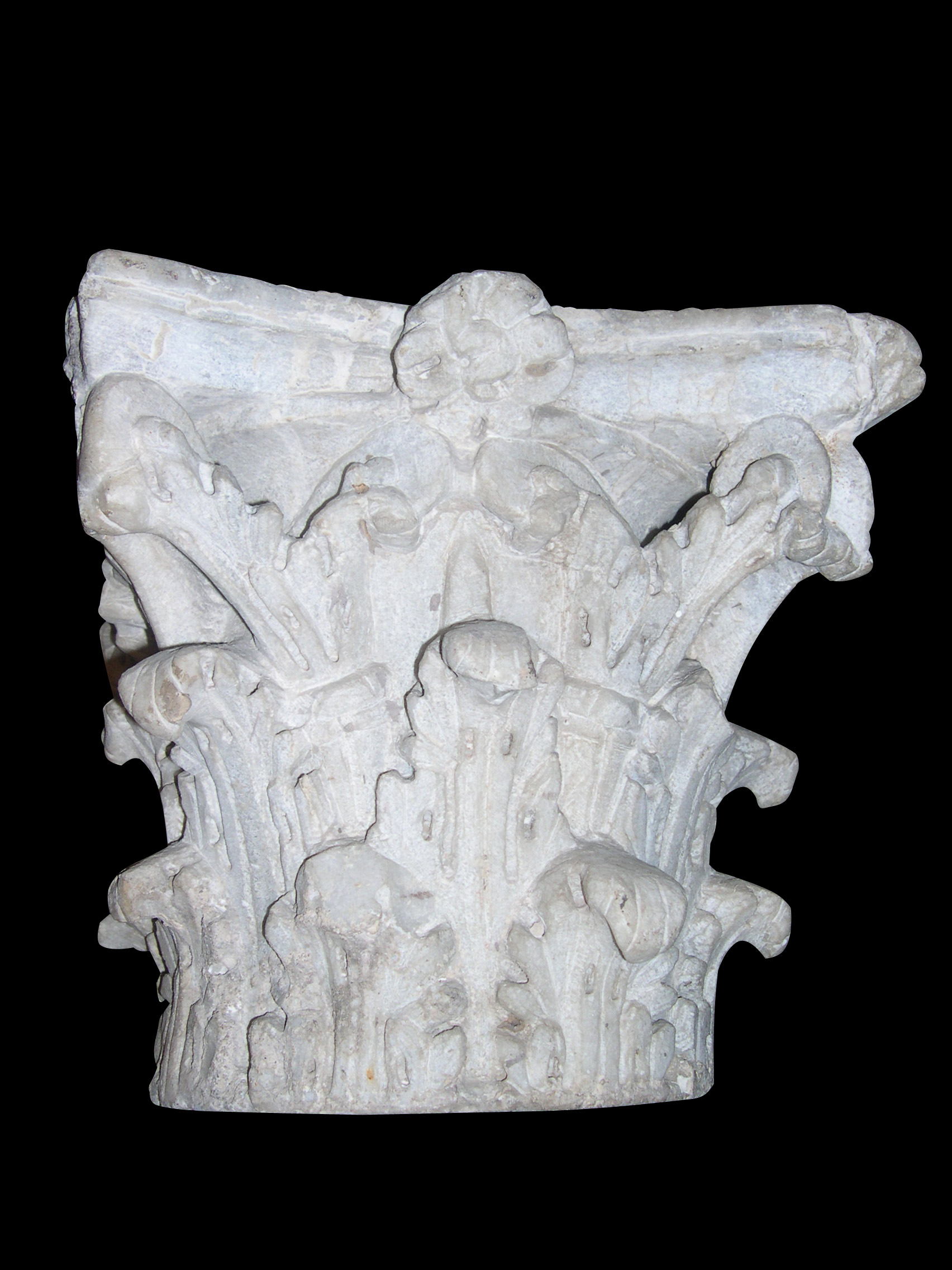Corinthian column capital
Corinthian column capital with two thirds of the kalathos covered by two crowns of eight acanthus leaves, articulated in five lobes. The lobes are divided by deep vertical grooves and not by the canonical voids, which in fact are here abstractedly placed near the inner points of the inferior lobes and over the large central rib; they have an elongated oval shape obtained with two adjoining drill-holes. The lobes are split in three lanceolate points with rounded tip, feebly marked by a very thin incision; another incision runs centrally over the large midrib and, on the second crown, stretches until it reaches the middle of the leaf below. The tip of the leaf is fairly short and gently bent outwards. The diagonally arranged cauliculi have a ridged shaft and a rim with reversed sepals, coarsely rendered by means of a pair of curved incised lines. From these spring the tight calyx leaves with the small curved tip supporting helices and volutes; the latter are formed by a flat strip curling into a small, tight coil. The abacus is embellished by a flower with long wavy pistil, supported by a tongue-shaped leaf originating from behind the central folia. The piece shows a rather careless handling, particularly patent in the uncertain, at times wabbling, tracing of the incisions which, especially in the case of the cauliculi and the leaves’ pages, are engraved in a rather abstract manner with no organic meaning. An equally hasty work is betrayed by the rough grooves which mark the diversity of planes. Proportions, arrangement and general structure are still steeped in Julio-Claudian tradition, while the kind of acanthus with vertical grooves, certain rigidity and vertical voids stands as an indication of a later chronological setting, being closer to the artefacts carved between the end of the I and the first half of the II century AD. In particular, our form of acanthus can be compared to that of the series of Trajanic capitals in the theatre at Merida, of some early II century exemplars from Ostia and, specifically for the detail of the voids placed on the midrib, of the capitals in the Heliocaminus Baths in Hadrian’s Villa at Tivoli. Our capital is thus datable to the Trajanic-Hadrianic age or, at the latest, within the first half of the II century AD.







